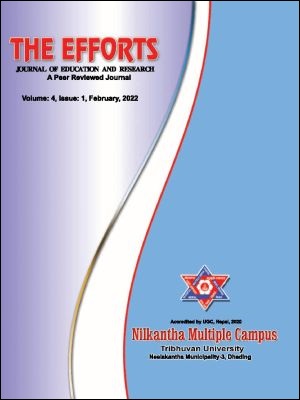Trade Liberalization Process and Its Impact on Agriculture Sector in Nepal
DOI:
https://doi.org/10.3126/ejer.v4i1.44172Keywords:
export, export import ratio, food and live animals, import trade balance, trade liberalization, GDPAbstract
This study examines the process of Nepal's trade liberalization and its impact on Nepalese agriculture sector. It explains and analyzes the various economic policy reforms undertaken in Nepal including trade, fiscal, industrial, and financial reforms; and explains how these reforms supplemented one another to promote trade liberalization. It is descriptive and analytical study. Simple descriptive statistical tools were used to analyze the impact of trade liberalization on agriculture sector in Nepal. The study finds that trade liberalization has not caused any significant changes in the position of Nepalese agriculture sector. It means a condition of Nepalese agriculture has not been improved and it is being deteriorated. Similarly, export/import ratio has been further decreased continuously after trade liberalization implying that power of export of agro product to purchase import of agro product is continuously diminishing. Similarly, there is continuous trade deficit in food item and live animal after trade liberalization. Role of agriculture in the economy has been decreased. It has increased the dependency on foreign agricultural products.
Downloads
Downloads
Published
How to Cite
Issue
Section
License
All rights reserved. No part of this journal may be reproduced in any form or by any electronic means, including information storage and retrieval system, without prior permission from the publisher.




